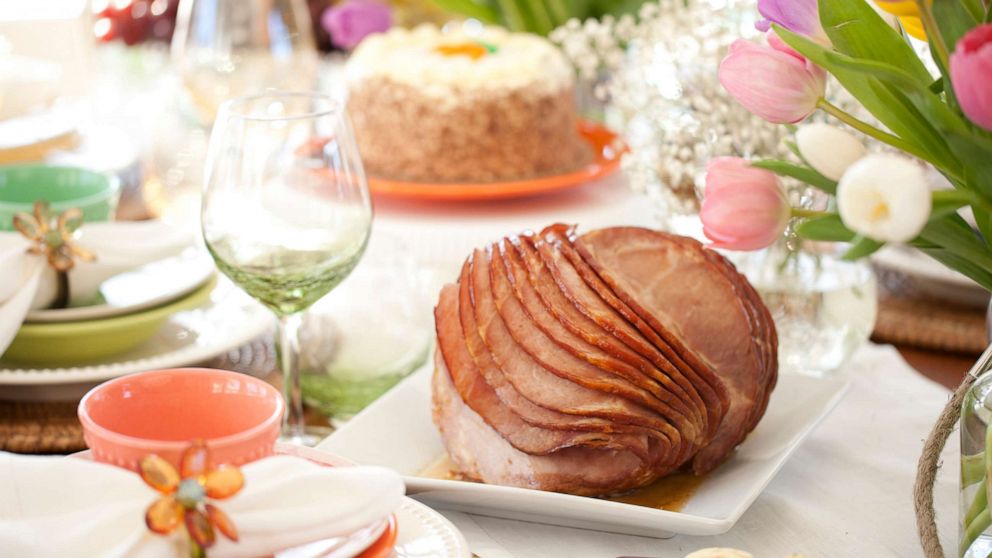
Now that the Easter eggs have all been gathered and family and friends return to the work week, it's time to decide how long to keep that half-eaten ham or other party foods that were too tasty to throw out.
After all the fun of festive gatherings, no one wants to get sick from foodborne illness, so "Good Morning America" rounded up these important safety tips from the Centers for Disease Control and Prevention to determine how long you can safely snack on any Easter leftovers.
"Some foods will quickly become unsafe to eat if not refrigerated or frozen, such as meat, chicken and other poultry, seafood, dairy, cut fruit, some vegetables and cooked leftovers," the CDC says. "Throw away any of these perishable foods that have been left out for 2 hours or more."
Any foods that sat out in temperatures of 90 degrees or hotter, such as at a picnic or outdoor setting, should be tossed out after just one hour.
Leftovers that pass the two-hour rule can be divided into smaller portions, placed in reusable, shallow containers with minimal air space and refrigerated or frozen.
For leftovers going in the fridge, store at 40 degrees or below as soon as possible, within two hours of preparation.
Hot foods can be placed directly into the refrigerator.
Leftovers should be reheated to at least 165 F before serving and eating, which includes any leftovers warmed up in the microwave.
According to FoodSafety.gov, a website containing food safety information provided by government agencies, here are some best practices for how soon you should finish any foods that are popular on the Easter table from quiche to cakes:
Bacon: If you didn't use up as much bacon as a recipe called for, or maybe needed less for brunch than you originally intended, any leftover uncooked bacon can keep in the fridge for one week from when it was purchased or opened. Alternatively, cooked bacon can last for 5 to 14 days if refrigerated after making it.
Breads, homemade: When stored in the pantry from the date it was baked, breads can last for three to five days, which is a shorter shelf life than most commercial bread products due to the lack of preservatives. When refrigerated, homemade breads can keep up to three months.
Cakes: Cakes can keep up to 10 days if refrigerated properly from the time they were first made and served.
Casseroles: A properly stored prepared casserole can be kept in the fridge and eaten for up to four days from when it was cooked.
Cinnamon Rolls: On the off chance you have leftover cinnamon rolls, the sweet pastry will keep for one to three days in the pantry from the date it was made or purchased and up to three months if frozen from the time it was served.
Egg dishes: From strata and quiche to egg casserole bakes, leftover egg dishes should be enjoyed within three to four days if refrigerated from the day it was made. If it has been frozen from the time it was baked and served, the egg dish can be safely eaten up to three months later.
Hard boiled eggs: The Easter staple will last for up to one week if refrigerated and stored properly from the date it was cooked and served.
Check out more on how long eggs stay fresh here.
Ham: A bone-in ham that was fresh and cooked before eating can be eaten after refrigerated for up to one week, and is safe to eat one to two months from frozen. For a ham that was purchased canned or fully cooked and has already been opened, it's safe to eat for up to five days from the fridge and up to two months if frozen.
Fresh fruit pies: One week if refrigerated after opening or making (if from scratch); eight months if frozen from the date it was made or purchased.
Use the Food Saver app online to search for other specific foods that you may have left over.